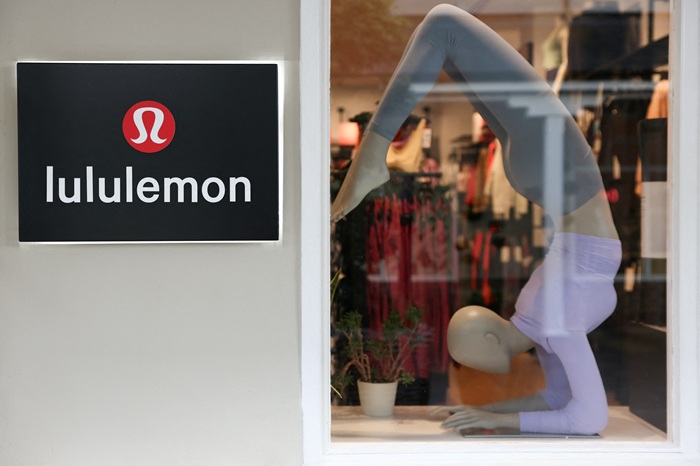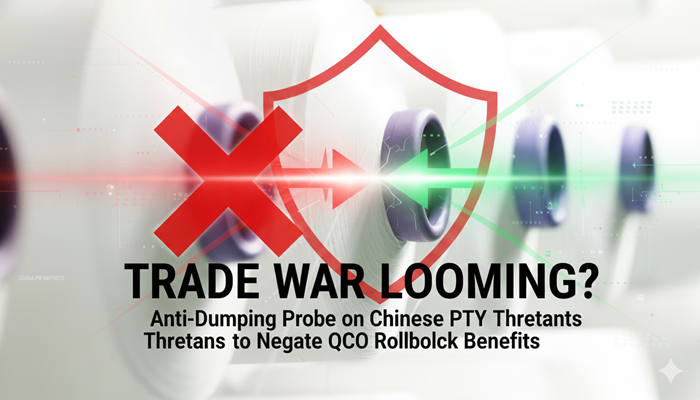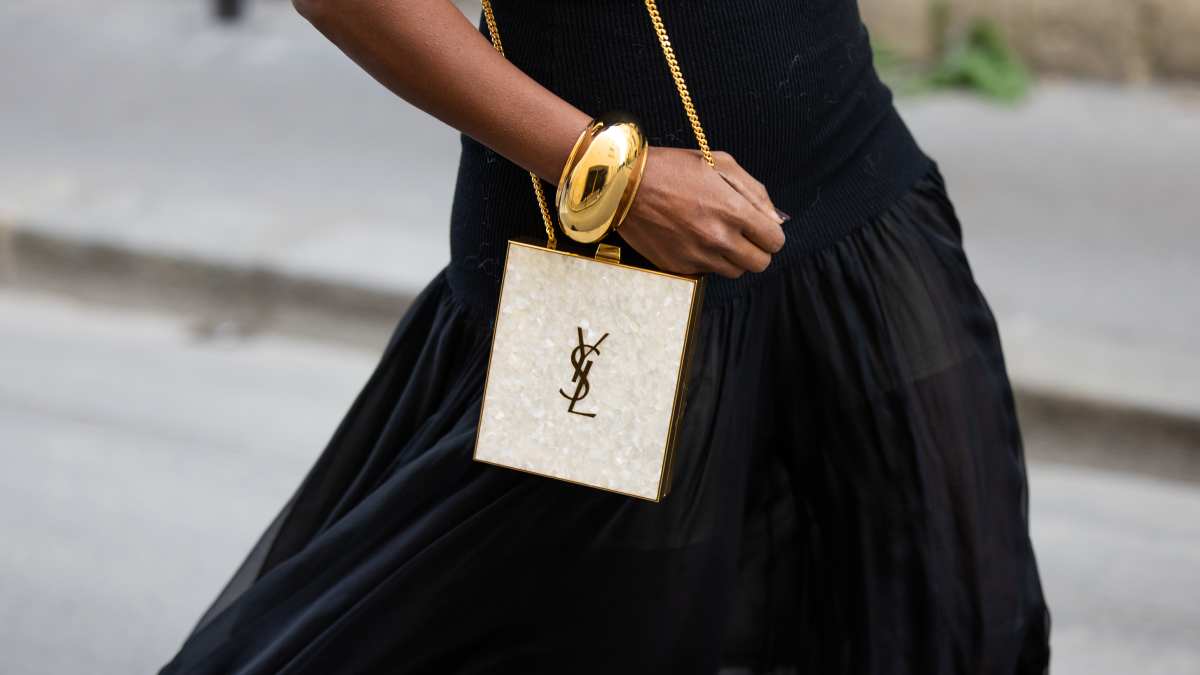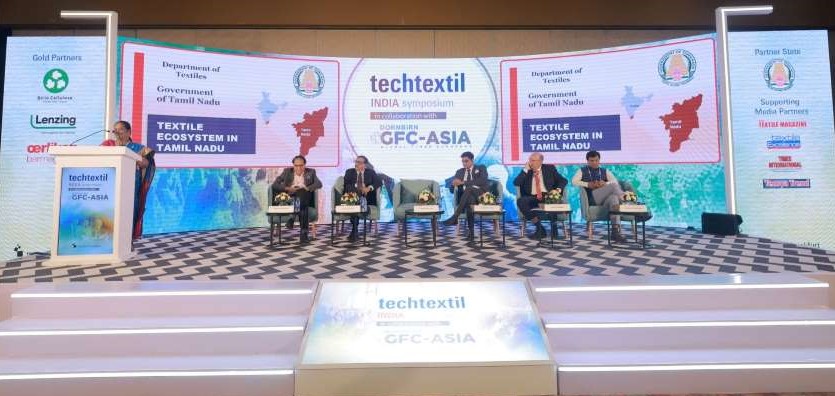FW
Vietnam's textile and garment sector, the world's third-largest exporter behind China and Bangladesh, is set for robust expansion, projecting export revenues to hit $46 billion in 2025, representing a solid 5.6% year-on-year increase. This optimism is driven by manufacturers successfully securing orders well into the first quarter of 2026, a clear sign of global brands continuing to diversify sourcing away from China. The United States remains the key driver, expected to contribute $18.6 billion in revenue, an over 11% rise from the previous year, underscoring Vietnam's critical role in the global apparel supply chain.
The crucial green and digital shift
However, this growth trajectory is contingent on addressing significant internal challenges, particularly the pressure to meet increasingly stringent global sustainability standards. To maintain competitiveness, the sector is currently undergoing a "dual transformation": digitalization and greening. Industry leaders, like the Vietnam Textile and Apparel Association (VITAS), emphasize that this transition is mandatory, not optional. Key initiatives include massive investments in AI-powered production lines and Cold-Pad-Batch (CPB) dyeing technology, a greener process that can reduce utility costs by over 70% and lower emissions.
Navigating rising costs and trade policy
Despite its strong export performance, Vietnamese production costs are reportedly 40-45% higher than rivals like Bangladesh, and the country remains heavily dependent on importing up to 95% of its raw materials, including cotton and synthetic fibers. This dependency creates vulnerability, especially under tightening rules of origin within Free Trade Agreements (FTAs) like the EVFTA. Therefore, the strategic focus is on increasing the domestic value-added rate (currently around 52%) and attracting high-tech foreign direct investment to close the local supply chain gaps.
Lululemon's new 17,000-square-foot flagship store in New York City's highly competitive SoHo district is more than just an expansion—it's the North American debut of a critical, new global retail design concept. This substantial investment comes as the premium athletic apparel brand battles slowing sales growth in the Americas, with comparable sales declining by 4% in the recent quarter. The SoHo location, which replaces a smaller local store, serves as a high-stakes case study in how Lululemon plans to "re-energize" its domestic market by shifting focus from transactional retail to an elevated, sensory-driven guest experience.
The Experience-First strategy
The design, featuring 3D-printed recycled materials, hand-formed tilework, and a distinct lighting installation, is rooted in "movement, connection, and sensory engagement." This approach aligns with Lululemon's broader 'Power of Three Times 2' strategy, which aims for $12.5 billion in revenue by 2026 by focusing on premium product innovation and guest experience. "Every detail has been curated to evoke emotion and connection," stated Darin Rabb, SVP of Global Brand Creative, suggesting that the brand is banking on physical design to combat increasing competition from younger athleisure labels and to justify its premium price point amid economic pressure.
Lululemon's 'Power of Three X 2' growth pillars
The brand's ambitious growth plan, 'Power of ThreeX 2', is designed to achieve $12.5 billion in total revenue by 2026—a doubling of 2021 net revenue. The strategy is anchored by doubling down on three key pillars: Product Innovation (extending core franchises and creating new technical apparel), Guest Experience (driving engagement through technology and community-focused physical stores like SoHo), and Market Expansion (quadrupling international revenue, focusing heavily on regions like China and Europe). This strategy guides all major investments, including the new flagship's experiential design.
Corporate shifts and global momentum
The store opening coincides with significant executive changes, including the departure of a long-time President of the Americas, underscoring the need for a strategic reset in the region. Meanwhile, Lululemon's International segment remains the growth engine, with net revenue surging by 22% in the last reported quarter, largely driven by expansion in China and Europe.
The SoHo flagship, set to serve as the blueprint for future North American stores, is tasked with replicating that international momentum domestically, proving that high-touch physical retail can still drive engagement even when the domestic market is struggling with product "staleness," as acknowledged by the CEO.
The youth-focused fashion brand Monki, part of the H&M Group, is making a decisive shift, eliminating all its standalone physical stores to operate as a completely digital-first entity. This aggressive move is a direct response to the challenging global retail landscape, where profitability is increasingly difficult to achieve through traditional brick-and-mortar networks, a factor contributing to the H&M Group’s reported 42% decline in Q1 2025 operating profit. Monki is abandoning the operational overhead associated with its global physical footprint, which recently comprised approximately 48 stores across 15 international markets, as part of the Group’s strategic drive to reduce complexity and concentrate investment in high-return digital channels.
Integrating into the weekday digital ecosystem
Monki's new strategy centers on its integration into the Weekday brand platform, which is also owned by H&M Group. This consolidation is designed to create a more powerful and streamlined multi-brand digital destination aimed at the 'creative generation.' The move blends Monki’s distinct graphic and street-style aesthetic with Weekday's established denim and contemporary casual wear range. This integration is crucial for competing with ultra-fast digital rivals by offering a unified and comprehensive online shopping experience. A limited number of former Monki retail locations will be transformed into multi-brand Weekday stores, providing a highly curated physical space for the combined offering.
H&M’s case study in retail rationalization
This transition—from a physical store model to purely digital with select retail presence within a sister brand—serves as a compelling case study in how established fashion conglomerates like H&M Group are adapting to omnichannel realities. By shifting Monki’s substantial digital revenue stream to a more efficient, capital-light model, the Group aims to eliminate the drag of underperforming leases. This focused investment aligns with H&M’s broader push to optimize its total store count by a net of 110 locations in 2025, directing resources toward better digital personalization and high-growth markets, ensuring Monki's long-term commercial viability within the larger portfolio.
The Indian textile supply chain is facing a significant bottleneck in the downstream garment sector, leading to an acute decline in cotton yarn prices across major trading hubs. In Mumbai, South Indian cotton yarn rates have fallen by an estimated ₹5 to ₹8 per kg, driven by intense selling pressure from stockists and spinning mills. This downward trend is a direct result of sluggish fabric lifting from readymade garment units and tight payment conditions throughout the value chain. India's textile exports, particularly ready-made garments, saw a 12.9% slump in October 2025 due to global demand slowdown and high US tariffs, compounding the domestic inventory issue.
The weakening demand cycle
The issue stems from global economic uncertainty, which has lowered demand for finished apparel and, consequently, reduced fabric production. "Slow lifting of fabric from the garment industry is the real problem," noted a Mumbai-based trader, adding that weaving units are actively discouraging higher production. This creates a classic demand-side weakness where spinners are forced to offer steeper discounts to clear inventories and improve cash flow. This challenging scenario threatens the operational viability of smaller, less financially robust spinning mills, despite the fact that India's domestic cotton yarn production and sales volumes remain relatively stable, supported by domestic apparel and home textile sectors.
Industry outlook and mitigating factors
While the immediate outlook is bearish, the industry is closely monitoring global factors. The removal of the Quality Control Order (QCO) on certain man-made fibres (MMF) intermediates by the government is expected to ease raw material costs for the downstream garment sector, potentially boosting demand for yarn as an input.
Furthermore, an expected recovery in domestic demand is forecasted to drive cotton yarn volumes up by 5-6% in 2026. However, the pressure on the ₹4,500 Cr spinning segment highlights the vulnerability of India's textile sector to global demand swings and the need for stronger financial support for the entire value chain
H&M Group is executing a major strategic overhaul, prioritizing the quality and profitability of its retail footprint over sheer volume. The company's plans for 2025 reveal a significant net reduction in physical stores: a planned 190 store closures will be partially offset by 80 new openings, leading to a net closure of 110 locations. This aggressive rationalization strategy comes as the fast-fashion giant aims to improve operational efficiency after a reported 42% drop in Q1 2025 operating profit, a figure heavily impacted by high inventory costs and macroeconomic slowdown.
Streamlining the global footprint
The majority of the closures will target underperforming, smaller-format stores in mature Western European and North American markets, where retail penetration is already high and the transition to online shopping is advanced. This is exemplified by the complete physical phase-out of the Monki brand's standalone stores, integrating its offerings solely onto digital platforms and select multi-brand Weekday locations. H&M CEO, Daniel Ervér, emphasized that this is a "deliberate move to secure a profitable and sustainable growth trajectory," signaling a shift from blanket expansion to highly targeted, high-return investment.
Investing in the omnichannel future
While the gross number of closures (190) is high, the 80 new stores and substantial investment in existing flagships underscore a belief in a hybrid omnichannel future. The new locations are strategically placed in high-growth areas, particularly in emerging markets like Latin America and Southeast Asia, and are designed to be larger, technologically integrated "experience hubs." By shedding unprofitable physical assets and maintaining a rigorous focus on digital sales (which now surpass 30% of total revenue), H&M is aligning its real-world presence with modern consumer behavior and the demands of its $400 million inventory challenge.

The secondhand wholesale sector, once seen as the back end of fashion, is now leading a quiet revolution, one that blends sustainability, technology, and profit. A new white paper, ‘The Financial Impact of Upcycling and Value-Added Services on Secondhand Wholesalers in 2025’, reveals how upcycling has turned this once low-margin industry into one of fashion’s most profitable and purpose-driven frontiers.
From scrap to status symbol
The single most striking insight from the study is the margin transformation of wholesalers who have shifted from mere resale to value-added upcycling. Upcycling, the art of converting discarded garments into higher-value pieces is proving to be a game-changer. Wholesalers who previously operated on slim 10-20 per cent margins are now seeing returns as high as 45 per cent, driven by the consumer’s appetite for authenticity and environmental consciousness.
Table: Comparative Margins in Secondhand Wholesale Operations (2025)
|
Operation type |
Typical gross margin (estimated) |
Retail markup (upcycled vs. secondhand) |
|
Standard Bulk Wholesale |
10-20% |
N/A |
|
Upcycled Product Lines |
30-45% |
2.5-4x Higher |
The table highlights the fundamental economic shift in the secondhand value chain. Upcycled lines not only double gross margins but also command a retail markup up to four times higher than basic resale goods. This shift reflects a new consumer mindset where uniqueness, craftsmanship, and sustainability justify luxury pricing. Younger demographics particularly Gen Z and Millennials are driving this change. They view upcycled products not as ‘used’ but as ‘reinvented’. Their willingness to pay more for sustainability-aligned, one-of-a-kind pieces has positioned upcycled fashion as the new expression of conscious luxury.
The new luxury blueprint
The success of upcycling isn’t just a story of creative re-engineering; it’s a story of strategic collaboration. Wholesalers with technical expertise in sorting and remanufacturing have become essential partners for major fashion brands grappling with Extended Producer Responsibility (EPR) mandates. A landmark example is the Bank & Vogue-Tapestry partnership, where post-consumer denim was transformed into the Coach Signature Denim Soho Bag.
The collection, made from reclaimed jeans, sold out multiple times not just because of its design, but because of its story. It symbolized how purpose can be profitable, merging circular design with brand prestige. “Bank & Vogue’s collaboration with Tapestry to upcycle post-consumer denim into the Coach Signature Denim Soho Bag remains a landmark case—selling out multiple times and demonstrating that upcycled luxury can combine profit with purpose.”
Such partnerships mark the institutionalization of upcycling within mainstream fashion. For brands, they offer compliance and narrative capital. For wholesalers, they unlock access to premium brand ecosystems and international markets turning sustainability from a cost into a competitive advantage.
Efficiency meets creativity with AI
Upcycling’s primary challenge lies in its labor intensity. Skilled artisans designers, cutters, and sewing specialists now account for 30-40 per cent of total production costs in upcycling operations. However, AI and automation are rapidly changing that equation. AI-powered textile sorting systems are enabling wholesalers to automatically identify fabrics suitable for reuse, improving precision and reducing manual handling. Similarly, robotic cutting machines are standardizing repetitive tasks while minimizing material waste.
Early adopters report 20 per cent labor savings and substantial reductions in error rates. These efficiencies are turning small, fragmented workshops into scalable production ecosystems. The data highlights a dual imperative:
upcycling is both an art and a process industry. Wholesalers who integrate AI-driven sorting, automated repair, and digital workflow tools will achieve sustainable scalability. The winners in 2025 will be those who can balance creativity with throughput turning fashion waste into a repeatable, profitable system.
Transparency Is the new loyalty
In a market where sustainability has become table stakes, transparency is now the true differentiator. Surveys reveal that 70 per cent of global consumers factor in environmental impact before making fashion purchases. Wholesalers are responding by embedding digital product passports and blockchain-based traceability into their operations. These tools allow consumers to see each garment’s lifecycle, from raw textile to upcycled product and track its carbon footprint and production story.
Transparency thus has become an emotional anchor for modern consumers. It transforms secondhand products into traceable, storied items that reflect ethical pride. This digital trust loop proof of origin, impact, and transformation fosters loyalty and enables premium pricing across platforms. The hybrid model of 2025
The white paper concludes that the most resilient business model is a hybrid structure combining bulk resale for volume with upcycled collections for value. This diversified approach cushions wholesalers against market volatility while aligning them with multiple revenue channels from luxury collaborations to online sustainability marketplaces. Diversification mitigates dependence on single buyer segments. It allows wholesalers to operate across the entire value spectrum of the circular economy from low-margin, high-turnover bulk trade to high-margin, branded upcycle partnerships.
The secondhand wholesale sector is no longer the endpoint of fashion it’s the beginning of regeneration. By merging technology, artistry, and ethical enterprise, upcycling has rewritten what luxury means in 2025. Where once wholesalers dealt in discarded fabrics they now deal in cultural capital a fusion of sustainability and storytelling that’s profitable, premium, and profoundly transformative.
India is aggressively repositioning its economic engagement with Afghanistan, zeroing in on the textile and apparel sector as a high-potential avenue for mutual growth and regional stability. This push is fueled by Kabul’s urgent need to strengthen its domestic textile ecosystem and New Delhi’s established position as the world's second-largest cotton producer.
Capacity building and investment outlook
Recent high-level talks, including the visit of the Afghan Director General of Economic Relations, have cemented plans for technical support and skill development for Afghan cotton farmers. Afghanistan, which imported a substantial USD 742.8 million worth of textiles and clothing globally in 2024, sees India as a critical partner to address its supply chain gaps. India, already the second-largest supplier, exported USD 68.7 million in textile products to Afghanistan in 2024. The renewed focus promises to elevate India’s market share significantly.
"Our goal is self-sufficiency and job creation through the textile chain," stated an Afghan trade official, highlighting the government’s commitment to an "economic-oriented policy." This commitment is backed by enticing incentives, including a proposed five-year tax exemption for new industries and a nominal 1% tariff on raw materials and machinery.
The connectivity challenge While the market opportunity is large, the primary challenge remains logistics. The recent activation of air cargo services on the Kabul-Delhi and Kabul-Amritsar routes, coupled with calls for better utilization of Iran’s Chabahar port, aims to ease shipment issues. This improved connectivity is vital for Indian textile majors, which can leverage their expertise in spinning and garment manufacturing to establish joint ventures or supply raw materials, mirroring the success of initiatives like the SEWA (Self-Employed Women's Association) vocational training centres previously established in the country. The successful navigation of geopolitical and logistical hurdles will be the defining factor in transforming this bilateral textile vision into a multi-million-dollar reality.
The Prada Group is accelerating its most significant strategic move in its 112-year history—the €1.25 billion acquisition of rival Italian luxury house Versace from US-based Capri Holdings—by appointing heir Lorenzo Bertelli as its future executive chairman. The appointment signals a direct injection of the Prada family’s successful turnaround strategy, particularly the revitalization playbook used for its younger brand, Miu Miu, into the lagging Versace brand.
The high-stakes luxury consolidation deal that returns Versace to Italian ownership is set to close on December 2, 2025. The Prada Group is completing the €1.25 billion (approx. $1.4 billion) all-cash acquisition of Versace from US-based Capri Holdings, a move widely viewed as an attempt to create an Italian counterweight to French giants LVMH and Kering.
The turnaround challenge and Miu Miu blueprint
Prada’s move is predicated on the belief that Versace, despite its iconic status and global recognition, is significantly underperforming its potential. The brand’s revenue fell by 15.0% to $193 million in Q3 Fiscal Year 2025 under Capri Holdings, highlighting the urgency of the intervention. Bertelli, who successfully helmed Miu Miu’s recent surge (with retail sales growing 93% in 2024 and a further 41% in the first nine months of 2025), is expected to replicate its model: a blend of sharp product repositioning, renewed narrative focus, and engagement with younger consumers.
Prada aims to leverage its superior industrial capabilities, retail execution, and operational expertise to stabilize the house known for its bold, maximalist aesthetic, creating a formidable Italian luxury conglomerate with pro-forma revenues exceeding €6 billion. While analysts note Prada's mixed M&A history, the group remains financially strong, reporting 19 consecutive quarters of growth as of September 2025. The challenge for Bertelli will be harnessing Versace’s strong brand equity to deliver commercial results without diluting its distinct, high-fashion DNA.
The recent launch of a state-backed compensation fund in Uzbekistan, designed to absorb the costs of Better Cotton Initiative (BCI) certification for local producers, signals a major tectonic shift in the global fibre and yarn market. Uzbekistan, which was formerly subject to an international boycott, has successfully transitioned into a fully integrated textile powerhouse, now achieving 100% domestic processing of its raw cotton into yarn.
This pivot from raw fibre export to value-added manufacturing, supported by new government incentives, directly eliminates the primary financial barrier for cotton clusters seeking key international sustainability credentials.
This strategic policy move is expected to inject a massive, newly certified cotton supply into the global marketplace, directly challenging major yarn-producing hubs across South and Southeast Asia. The sudden availability of ethical Uzbek cotton at a cost-competitive price point intensifies the competition for spinning mills worldwide and will likely exert notable downward pressure on global yarn pricing, particularly in the certified fibre segment. With leading global apparel giants publicly committed to sourcing BCI-certified fibre, the ease of entry for Uzbek supply accelerates a fundamental re-alignment of supply chains. As the nation targets $7 billion in textile exports by 2028, this fund solidifies Central Asia's position as a dominant, vertically-integrated player in the responsible apparel sector.
The highly anticipated overhaul of Britain's import system is set to reshape the competitive landscape for apparel retailers. Following intense lobbying from domestic giants, the Treasury has confirmed plans to scrap the “de minimis” duty exemption on low-value parcels (under £135), a move forecast to generate approximately £500 million ($655 million) annually for the exchequer. The decision directly addresses concerns from legacy high-street brands who argue the historical tax exemption created an uneven playing field, allowing tariff-free entry for direct-to-consumer imports.
Strategic challenge for Ultra-Fast Fashion
For overseas platforms, this regulatory pivot requires a significant supply chain reset. Ultra-fast fashion like Shein’s historical success—shipping low-value goods like a $5 accessory or £12 dress directly to the consumer, will now incur the new levy. Industry data indicates over 1.6 million low-value parcels enter the UK daily under the current threshold, representing a massive volume now subject to duties.
George Weston, CEO of Associated British Foods (owners of Primark, a brand historically reliant on high-volume, low-margin, in-store sales), commented, "This move closes a loophole that has disadvantaged British business." While the full implementation is delayed until 2029, the announcement accelerates the pressure on global players to either absorb the cost or decentralize logistics closer to the market to maintain their aggressive growth plans.











